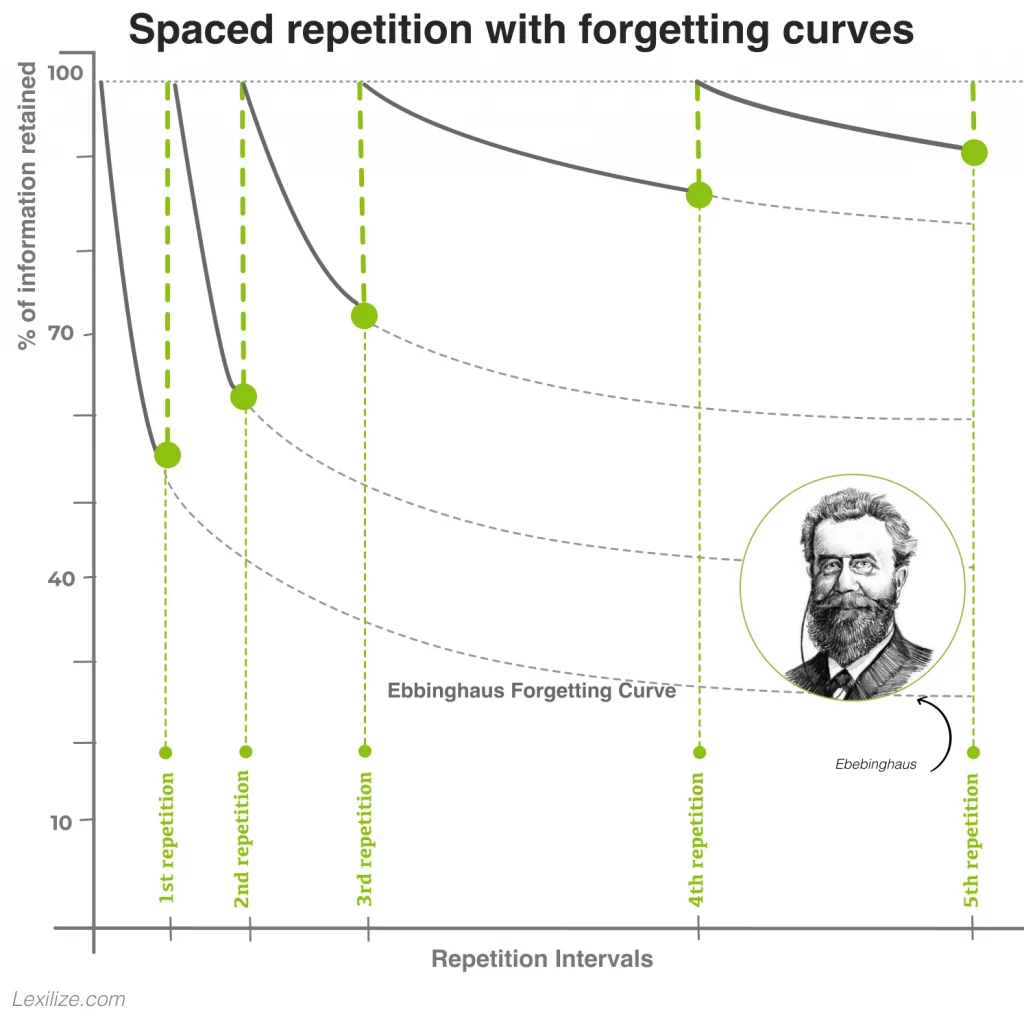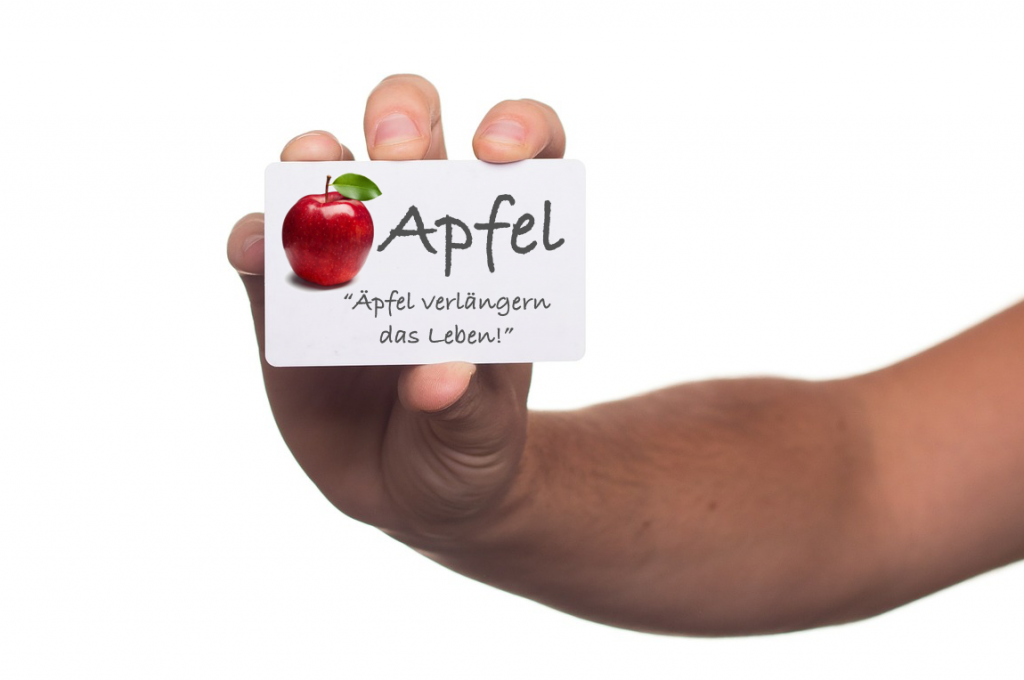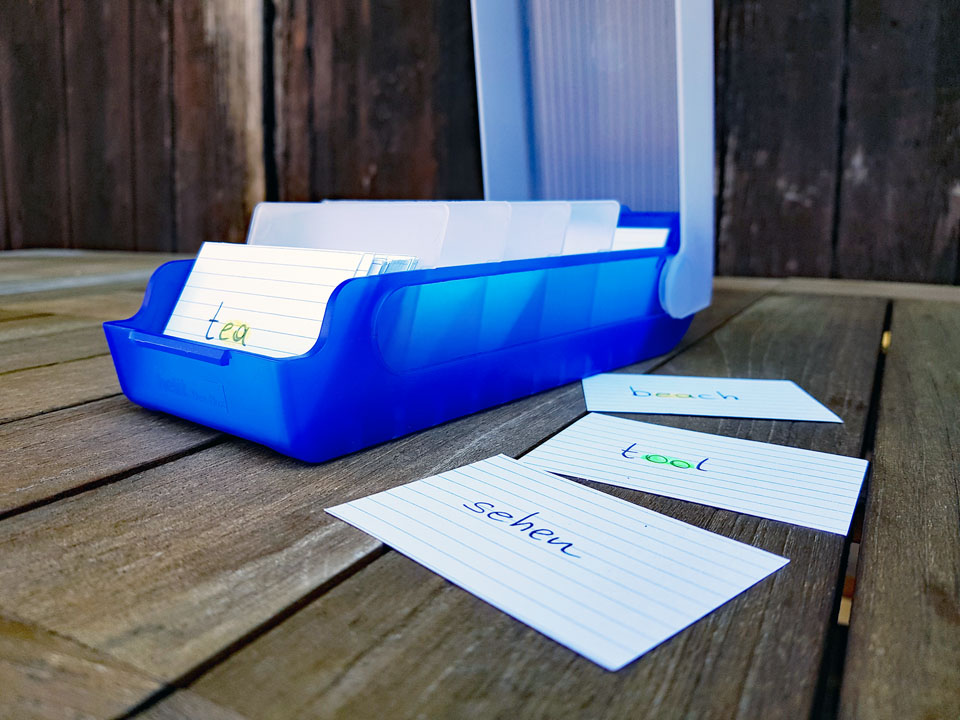Effectively learn German words with Flashcards.
If you are learning German, you have likely encountered the challenge of mastering German words across various topics. It’s probable that you have already explored this matter and discovered several methods for memorizing foreign words effectively.
In this article, I would like to discuss one effective method for memorizing German words and expressions, known as learning words using flashcards. While this method can be applied to the study of any topic, we will specifically focus on its application to the German language in this article.
Ebbinghaus forgetting curve or how we remember
In the 19th century, the German scientist Hermann Ebbinghaus investigated how the human brain retains information. The outcome of his research was the forgetting curve, which illustrates the effectiveness of remembering information over time.

If you examine the picture, it becomes clear that to memorize information effectively, it is necessary to periodically review it multiple times. Let’s attempt to apply this to learning German words.
Flashcards for memorization and spaced repetition
In the 20th century, Paul Pimsleur and Sebastian Leitner applied their accumulated experience and developed an effective approach to remembering information. This led to the creation of flashcards for studying.
A flashcard is a small piece of paper.

On one side of the flashcard, the word being studied is written in English, and on the other side, there is the translation of the word into German, along with transcription and an example of usage.
For effective memorization, it’s necessary to write down all the words that need to be learned on flashcards and place them in one pile.
Afterwards, you should have several boxes where you can organize the cards with words.

At the very beginning, all cards with words are in the first box and are considered unlearned.
We take a card and see what the word is. Let’s say it’s the word “Apple”. Then, we flip the card over and see how this word is translated into German, such as “der Apfel”, along with an example of use, for instance, “Äpfel verlängern das Leben!”.
After this, we consider that we have become familiar with this word and transfer the card to the second box. We do this with all the cards in the first box.
The next day, we start by taking cards from the second box and reviewing them. We first look at the card with the word “Tea” and try to remember the translation into German. After this, we turn the card over and check if we remembered the translation “der Tee” correctly. If yes, we transfer this card to the third box; if not, we move the card back to the first (initial) box, placing it at the top of the stack.
Let’s assume we have 8 boxes. Words that have “reached” box 8 are considered learned. The remaining words are still being studied.
New words must be added to the first box at the end of the pile.
It’s also worth noting that we repeat words from the second box every day, words from the third box every second day, from the fourth box every 3 days, from the fifth box every 7 days, and so on.

Advantages of the spaced repetition method:
- You focus exclusively on words that pose a challenge for you (easy words quickly reach box 8 and are considered learned).
- You save time in your study sessions (as you dedicate time solely to words that are difficult to recall).
- Words are memorized effectively due to frequent repetition.
Apps for learning German words
As you may already know, vocabulary cards and the spaced repetition method offer an undeniable advantage in learning foreign words and languages in general. However, paper cards are not the most convenient storage method. Therefore, we recommend using this method through a mobile application. While there are numerous such applications available, today we want to introduce our own to you. You can find all the necessary information about the application at lexilize.com or download it for Android from the provided link.
In this application, you can find the following features:
- Convenient storage of all your words in one application.
- Easy input of new words with transcription, word gender, and examples.
- Ability to add associative pictures for words.
- Automatic translation from DeepL and Yandex dictionaries.
- Automatic voiceover for all your words.
- Dictionary mode, where you can quickly find and recall your words.
- Five different modes for learning and revising words.
- Built-in spaced repetition algorithm that reminds you when and which words to review.
- Timed reminders on both your phone and smartwatch.
- Automatic word playback mode: listen and repeat the words while going about your business.
The application is free and functions without requiring an internet connection (internet access is only needed for automatic translation and selection of associative pictures).
With this application, you can study at any time you have a free 5–10 minutes, gradually improving your vocabulary and enhancing your foreign language proficiency.
You can download the application for memorizing German words for free here.

